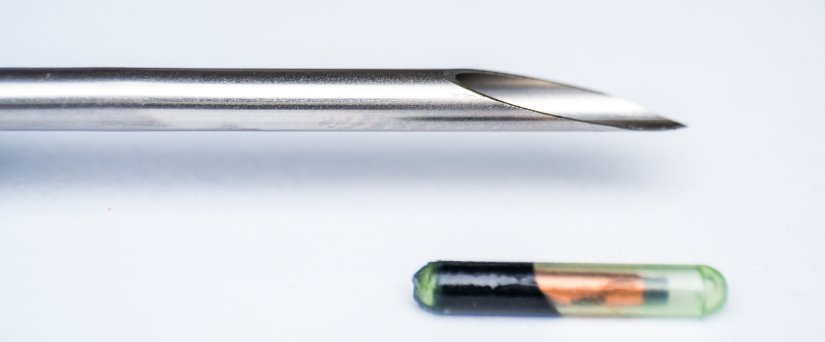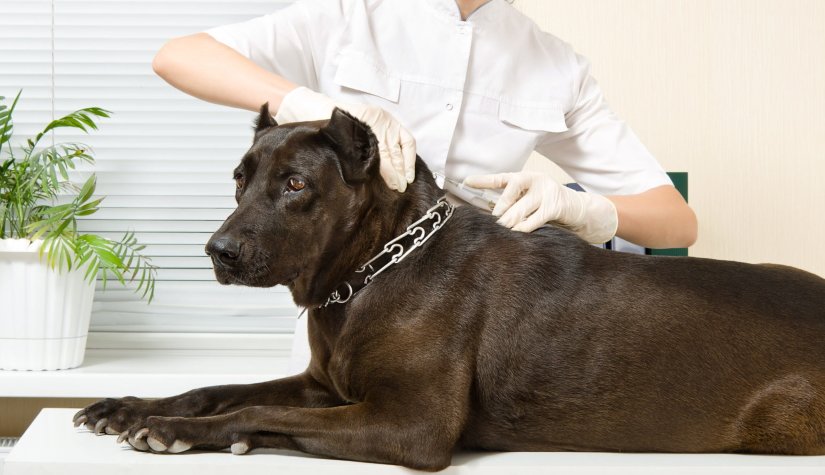There are so many reasons for microchipping your dog. Although there’s no exact data on how many dogs are lost every year, there are around 10 million pets that get lost or stolen each year in the US according to the American Humane Association. Dogs placed in new homes tend to try to escape, possibly trying to get back to their previous homes. Microchipping your dog protects him, and helps with dog safety, and in finding a lost dog quickly.
Don’t think that your dog won’t try this. Be proactive and prevent this from happening from day one. Here’s what you need to do!
- Collar, tag and microchip all dogs and pets. Microchipping is not enough, since many people tend to presume that dogs without collars are homeless. It’s also easier to find a lost dog’s information if he has a tag on. Make sure all your dog’s information is on the tag.
- Keep in mind that microchipping is useless if you don’t register your dog’s unique number on an online database.
- If you are having issues with your dog’s microchip number, contact your veterinarian to check it. You can also visit your local shelter, and ask them to scan the chip. When you have the number, register it.
What Are Microchips?

Microchips are computer chips that are implanted in to your dog’s skin via a syringe and needle. They are very small, and the size of a grain of rice. The whole process is similar to that of a vaccine, and does not hurt or traumatize your dog.
Because tags and collars can break or fall off, it’s necessary to microchip your dog to ensure his safety if he runs away or gets lost. Microchips work via radio signals through a scanner, and transmit the dog’s information from the encoded chip number back to the scanner. This ensures that all your dog’s information like phone numbers, owners, home addresses, are securely kept. All contact information is easy to get via a phone call.
The American Veterinary Medical Association (AVMA) adds that “It is injected under the skin using a hypodermic needle. It is no more painful than a typical injection, although the needle is slightly larger than those used for injection. No surgery or anesthesia is required—a microchip can be implanted during a routine veterinary office visit. If your pet is already under anesthesia for a procedure, such as neutering or spaying, the microchip can often be implanted while they’re still under anesthesia,” via AVMA.
AVMA goes on to explain that microchips are not a GPS device, and cannot track your dog if he or she gets lost. The most important take on microchips for dogs is that they are used in pets as an identification number. As of yet, they don’t store medical information about your dog. There are now some new microchip databases that allow for pet parents to store their dog’s medical information in the database, so that pet parents can use it as a quick reference.
AVMA explains that privacy and microchipping do not overlap. You will still have all your privacy regardless of whether you microchip your dog. The only personal information that is contained in the database is the exact information you put down when you register. Microchipping a dog does not allow for strangers to look up your address.
Keep in mind that you will need to register the chip with your latest information, and this will need to be updated each time you move or change phone numbers. If this is not done, the chances of reuniting with a lost dog becomes much slimmer.
Benefits of Microchipping

Studies show that microchipped dogs in most cases get returned to their owners, whereas dogs that are not microchipped will remain at shelters. Since dog collars fall or can be taken off by dog thieves, microchipping makes it harder for people to steal your dog. That said, keeping a dog collar with a dog tag on your dog, together with being microchipped will help him in the long run if he gets lost.
People that find your dog or shelters can return him easily because he’s microchipped. All they have to do is scan your dog, and retrieve your contact info from the database. They then will contact you. That’s why it’s so important to keep all your contact information current.
Microchipping Helps to Find Your Lost Dog in a Short Amount of Time
Protecting your dog with the use of a microchip has helped millions of dogs reunite with their pet parents. Additionally, all contact information needs to be updated when you move or change phone numbers. Since these use nationwide registries, all pet parents will benefit from microchipping their dog. Microchipping dogs does not cause any discomfort, and is 100% safe.
New Technology with Microchips

Some microchip manufacturers have improved their technology with options like opening your dog door when the dog approaches. There are other options like pet alerting services and pet travel assistance. Since microchips last a lifetime and are implanted in your dog, they cannot get lost. Keep in mind that it’s always a good idea to ask your veterinarian to check it each year to see if it’s still fully functional.
With the microchip being implanted, it shows definite proof of ownership, so that there’s no confusion about dog ownership. Numerous veterinary clinics will have discounts throughout the year for microchipping. It is usually around $40-$50, but can be discounted by veterinarians.
Microchipping Keeps Your Dog Safe During Pet Travel
Microchipping also helps when you travel internationally with your dog. You will need to have pet passport as well. AVMA describes the most popular microchip frequency used for international travel. They explain that “The International Standards Organization, or ISO, has approved and recommended a global standard for microchips. The global standard is intended to create an identification system that is consistent worldwide.
For example, if a dog was implanted with an ISO standard microchip in the U.S. travels to Europe with its owners and becomes lost, the ISO standard scanners in Europe would be able to read the dog’s microchip. If the dog was implanted with a non-ISO microchip and the ISO scanner was not forward- and backward-reading (universal), the dog’s microchip might not be detected or be read by the scanner.” The microchip databases are online or telephone-accessed databases, and are available 24/7/365.The ISO standard frequency is 134.2 kHz.
The AVMA recommends that all pets have a complete physical examination before departure to make sure that they are fine to travel. Any medical conditions could make air travel dangerous since your dog would have to get used to pressure and temperature changes. They also recommend that to reduce the risk of dogs getting lost at airports or during travel, that direct flights be considered.
Pets in cargo during flights risk the possibility of overheating during the hot summer months, thus the need to fly early morning or during the evening hours. All dogs will need to be current on their vaccinations, and pets should not be tranquilized before a flight. That said, microchipping dogs is somewhat required now for all pet travel for identification purposes. Here’s the take on foreign pet travel and microchips:
- Not all foreign countries will have microchip scanning capabilities.
- Microchips in the US operate on a different frequency level that may not be picked up by another countries scanner. (Please see ISO standard frequency explanation above)
- Use both collars with tags and microchips when travelling
- Make sure that your dog has the appropriate identification at all times during a pet vacay.
- Standard identification tags need to have your home address, phone number, and name.
- When travelling with your dog, place a travel tag with all the information, detailing the hotel that you’re staying at, and contact information in case your dog gets lost.
- As usual make sure that you have done all the last minute paperwork for pet travel and your pet passport ready for your dog, and that your microchip has current information. Consult with your veterinarian for the latest travel requirements.
Microchipping Protects Your Dog Permanently 24/7
Most veterinarians will recommend that although microchipping is tamper- proof, it’s very important to keep a dog collar on with tags, so that if your dog gets lost, the tags can be read easily, and the dog returned to his family.
Having a combination of both tags and microchip offers pet owners additional security in knowing that their dogs can be found quickly. That said, your dog’s rabies tag needs to always be on his collar so that strangers know that your dog is current on all vaccinations.

I loved how you mentioned that millions of lost dogs have been reunited with pet parents because of a microchip. My husband and I just recently got a dog for our family a couple of weeks ago, and we were wondering if getting one for her would be beneficial for us and her. I really appreciate you helping me learn more about the benefits of microchipping your dog!
It’s awesome that you point out that having your dog microchipped can help them get returned to you if they become lost. I want to make sure I don’t lose my new puppy, so I’m thinking about taking him to a veterinary clinic to get microchipped. I’m going to look for a good veterinary clinic in my area that offers dog microchipping services.
I’m glad you explained the microchipping your pet makes it harder for people to steal them. My sister wants to adopt a purebred dog in a couple of weeks, but she is worried that someone might steal the animal from her backyard. If she gets the dog microchipped, she wouldn’t have to worry about someone stealing it from her as much.